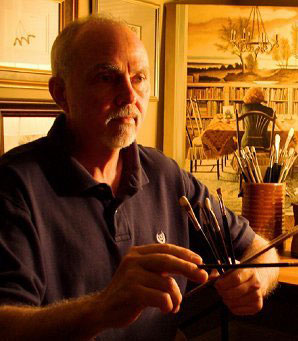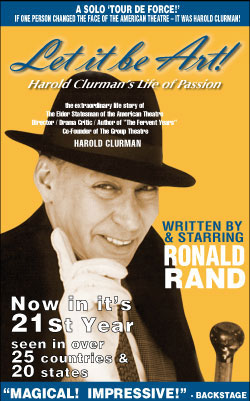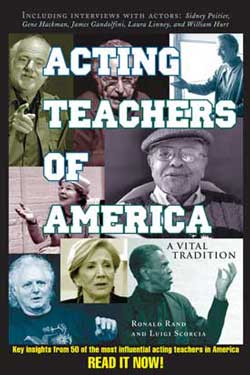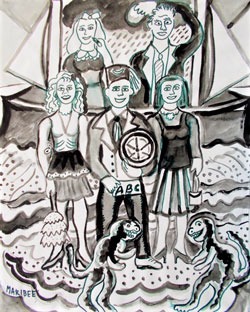Tim Stevenson
 One of America’s finest landscape painters, Tim Stevenson recently had a solo exhibition of over sixty of his most recent works featuring the peaceful vistas of the Tennessee Valley, vivid still life and thoughtful figurative paintings in watercolor and oil at the Carnegie Visual Arts Center in Decatur, Alabama. A native-born Alabama artist, he has been painting for over forty years in the tradition of the ‘Old Masters,’ (Vermeer and Rembrandt). A self-taught artist who ‘drew pictures for cookies’ at age three, his intermittent excursions into art included cartooning, advertising, illustration and billboard painting along the way. For nine years, Tim taught painting and drawing at his namesake art studio and school, and now teaches a small group of students twice a month in Tuscumbia. He finishes a new painting roughly every two weeks. www.timstevensonart.com
One of America’s finest landscape painters, Tim Stevenson recently had a solo exhibition of over sixty of his most recent works featuring the peaceful vistas of the Tennessee Valley, vivid still life and thoughtful figurative paintings in watercolor and oil at the Carnegie Visual Arts Center in Decatur, Alabama. A native-born Alabama artist, he has been painting for over forty years in the tradition of the ‘Old Masters,’ (Vermeer and Rembrandt). A self-taught artist who ‘drew pictures for cookies’ at age three, his intermittent excursions into art included cartooning, advertising, illustration and billboard painting along the way. For nine years, Tim taught painting and drawing at his namesake art studio and school, and now teaches a small group of students twice a month in Tuscumbia. He finishes a new painting roughly every two weeks. www.timstevensonart.com

You wrote: “I have found over time that the true value of art lies in its effect on the human heart and mind, its inherent soulfulness and its ability to stimulate thought.” Seeing an object before you and actually transferring it onto a canvas through paint requires great skill, concentration and patience. How does one begin to understand color and light?
Perception is relative, that’s number one. Given we have a fantastic ability to comprehend color and light; we have a hundred million receptors in our eyes and our brain is interpreting and making sense out of what we see. The problem is in the ‘software,’ how to make meaning out of visual world.

So it’s how our understanding comprehends tons of information. It has to do with our education. Whether it comes to us through other people, which is often the case, or from reading, or conversations with other artists or with our native intelligence, from just looking.
In my opinion, the real test of an artist is to comprehend the input. It’s great to have a good teacher; it’s all a key to learning. It’s takes a lot to learn all that is needed to make great art.
I have a college degree in art and during that time I felt there was more theory being taught than actual practice. I really consider I had some good teachers but my learning curve was more steep after my graduation when I went off to work by myself.

Particularly it was when I took up watercolor painting – it’s a very slow process. I would spend weeks and weeks on a painting. You can see the changes day by day in order to make judgments. In that way I worked in a fresh way. I made notes about what I could accomplish each day. Each day I might do a few square inches and try to accomplish that, a slow process but one filled with a fuller comprehension.
Taking your time is counterpoint to the way we’ve been taught to be as Americans, which is all about speed, money and power – and there are people who want that. Writers, actors, musicians, artists – we have to go off by ourselves to learn our craft very often, and spend time in solitude. That’s when the good stuff comes and what you discover is the boon you bring to the world.
We’re kindred spirits, you and I, and essentially we try to bring something good into the world. Sometimes it can be disappointing or frustrating but nevertheless we go back over and over again to the drawing board, ‘to the well’. That’s our purpose, our mission.
I understand when you were an art student at the University of North Alabama, you spent a fair amount of time painting in what is referred to as a modernist or abstract style.

You know there’s a story I’m fond of. Revolutions always leave fires in their wake. Mine was a personal revolution. It came on the heels of realizing who I am, and of not trying to be something I’m not.
In 1978 I burned four hundred and fifty paintings of mine and told myself: I’m starting all over. It felt great, it was a cleansing – turning a corner. It was like finding a new purpose in life. Prior to that, I was thinking those thoughts – y’know – of being famous.
And fame is a four letter word, according to Mr. Rogers. And that was the point. I began to think about my purpose more than the accolades and there’s a price to be paid for doing that for thinking of economics as less of a priority.
As a good friend sometimes reminded me: “You’re the only who cares,” and I made that decision, however the chips might fall.

Did your work in cartooning, advertising, illustration and billboard painting contribute to your skill in using a brush?
It all contributed tremendously. For instance, in billboard painting there’s no room for personal expressions. It’s purely a skill painting a thirty-foot long car or a fourteen-foot-tall peanut butter parfait with a cherry on top of ice cream, or a huge mug of beer with condensation on the side of the glass. You learn the skills of représentation, of accurate color, you gain a comprehension, an accuracy, in a nutshell. Your client is paying so you have to paint it as they see it, very realistically.
So it really helped me a lot to learn the skill of color-mixing and representing thing naturally. I painted over two thousand billboards and learned the art of billboard painting. I wish every artist who wanted to be a representational artist learned how to paint a thing larger than life to be seen by hundreds of people on a daily basis. Michelangelo did that kind of scale with the Sistine Chapel.
Were there artists you were drawn to when you began painting, and what was it about their work that touched you?

Originally I was impressed with Matisse, partly because of his color. I had a weakness with color, and I studied artist’s work from the era, particularly the impressionists, the fauve painters. Later on, I got to the Americans: Winslow Homer, Hopper and Wyeth. They were painters who had a lot of heart in their painting, very skillful at telling story they wanted to tell.
You currently have a solo exhibition of your work in Decatur – what does it mean to you seeing many of your paintings all together like this?
It’s very good to see them all together. When you’re working on a daily basis over the years, you’re stacking up all these paintings and you don’t see them except as in a portfolio. So it’s been good to see an exhibit of them in the context of how that contributes to what I have to say, a time to analyze and consider continuity and their effect as a group. I actually haven’t painted for a month right now, which is very unusual. Before that, it had been ten years since I took a month off. I did it to think.

How did you develop your eye to see what’s before you?
Scrutiny. This is antithetical to modern life. We’ve been going through a time, which began back in the 1980’s, with MTV videos and film clips and now the internet where everything has been spliced into split seconds, not allowing for scrutiny. That points to how culture is America is guided by speeded-up opinion. We’ve become a culture taught not to scrutinize, to not stop and think and allow time for things to resonate. Looking implies solitude, time to analyze what’s before you and that’s necessary for the artist.
Is there a particular time you paint and what materials do prefer to use?

I have more of a yeoman’s attitude. I get up and go to work every day. I like routines – having a certain moment in the morning when I have a brush in my hand. I’m asked: How can you be so prolific? It’s simply getting up and going to work. Stravinsky said: “I like a man who gets up and makes art.”
For many years I only worked in watercolor, and the past ten years have I shifted over to oil painting more and more so as I age. The hands tighten, a quality of vision is diminishing. With watercolor painting, it requires a certain type of precision, a clarity of vision. With oil painting, the same but possibly less so, because oil allows you to paint over what you’ve done, whereas watercolor is unforgiving.
Where do you like to paint the most?
I’m a studio painter. I’ve never been a plein-air painter. I’m much more deliberate in my approach. I think and think about a painting and then spend days, weeks, and sometimes months in the execution. In the studio the weather and the light doesn’t change, and I can keep a regular schedule in rainy days. I have eight windows in my studio so I can balance the amount of natural light with artificial light using shades and blinds.
When we begin to talk about some of the great landscape artists through the ages, to mention a few like Turner, Innes, Constable, Monet, Homer, Cezanne, O’Keefe, Rembrandt, Bierstadt, Vermeer, Sargent, Cole, Sisley, Church, among many others, the way in which nature is created on canvas varies from artist to artist. How would describe what makes an artist’s style and vision so unique?
A sense of place. That’s a very simple answer to a complicated question. Every place has its own locale, its own genius. When I was away from here, I began to understand it. Painting in this river valley, I understood it more as I continue to work at it.
I actually don’t remember learning to swim. My brother also told me he didn’t remember learning I asked our father if he remember teaching us to swim. He said: “I just pitched you and him in the river, but don’t tell your mama. And you swam like a fish.”
That happened when you I was a baby. I grew up with the river a part of me, so there’s the understanding of the place, and it comes from something deeper than memory spiritual. It comes from being in nature. I have a gut feeling that the geographic place from which you spring informs you for the rest of your life.
In American mythology, the river played a large social role in books like Mark Twin’s Huckleberry Finn. The Hudson River School of painting is another example. (I tried starting a Tennessee River School but so far I’m the only one.)
I think there’s some truth in that the wellspring of the imagination comes from somewhere in nature. If you’re a landscape painter, that wellspring is the source that informs you, the land.
I’ve been watching these clouds out the window and they they’re speaking to me about the time of the year, the change in the weather. I’m dissecting the colors, the different values, the birds flying by and soaring up. They’re like a message I might remember when I go to sleep. I have a phrase I use: “Take it to your pillow.” Before you go to sleep, bring up that internal vision and use it to go to sleep with, making it the last thing on your mind.
Why has teaching become a large part of your life?
I was reluctant at first. I just wanted to paint. But my wife, Carol, encouraged me to teach. She said to me: “You’ve spent all these years acquiring all this knowledge and to not pass it along…”

At first I started with one class with just six people, but within six months I had thirty students. I have really enjoyed watching people grow not just technically, but the sharing of the concepts and philosophy of art.
How would you say art could help us at a time like this?
I think it’s a reminder of another way of experiencing the world and we desperately need that. These paintings I painted were found in solitude, therefore the sprit will hopefully have something to do with a state of mind. There’s a quietness. The paintings are quiet, no more than just an aura of a moment, not crowded with other thoughts. They hold a ‘deep breathing.’
So that goes to all the other aspects of the arts and literature. Philosophers down through the centuries have gone off alone, to breathe deeply and experience life on a more basic level. Culture tells you to speed up, to make more money. I tell my students that it’s a good thing to trust the gut. Actually I think I’m less of a teacher. I’d have to say I’m more a reminder of what they already know and that’s why it resonates.
I think it’s necessary to find the better qualities in one’s self. It’s easy to separate and go to the lower nature. You see it in politics, various aspects of American life, when people are being divisive, hateful but there’s superior aspect of human kindness, an inherent goodness. It’s our ability to do wonderful, special, fantastic things. We have that ability. Sometimes we have that ability to paint a good painting, to write a good chapter in a book, to act really well, to carry people forward. To encourage and uplift, even to cause people to laugh. Having a sense of humor is the greatest thing. If you can laugh you have it made. I want to know how you can paint laughs. Now that would be quite an accomplishment.



























